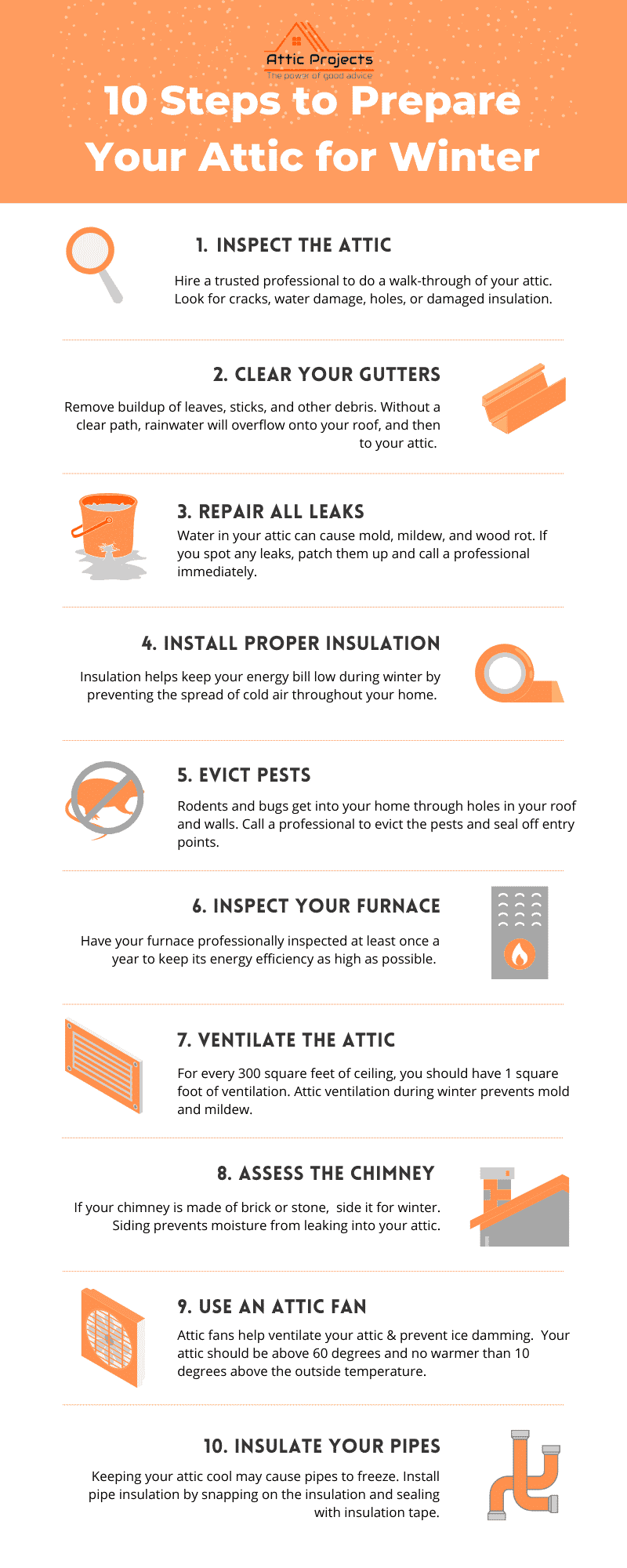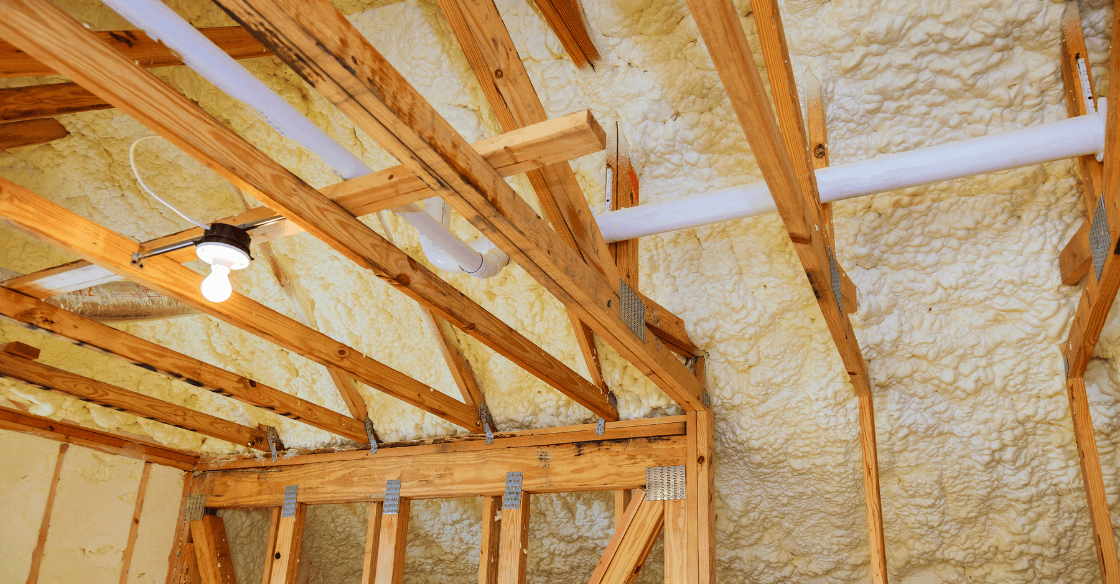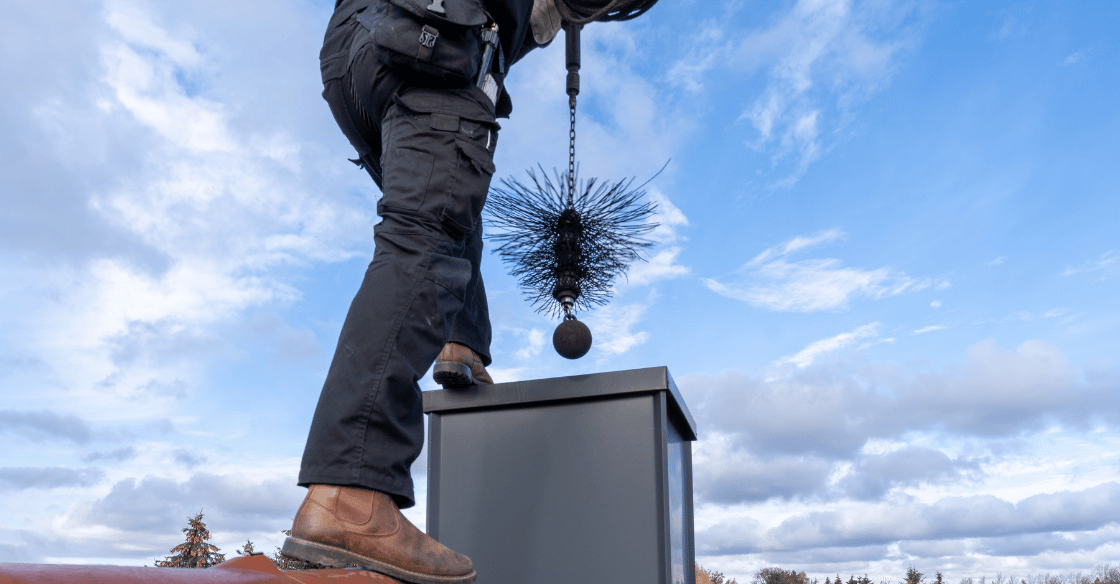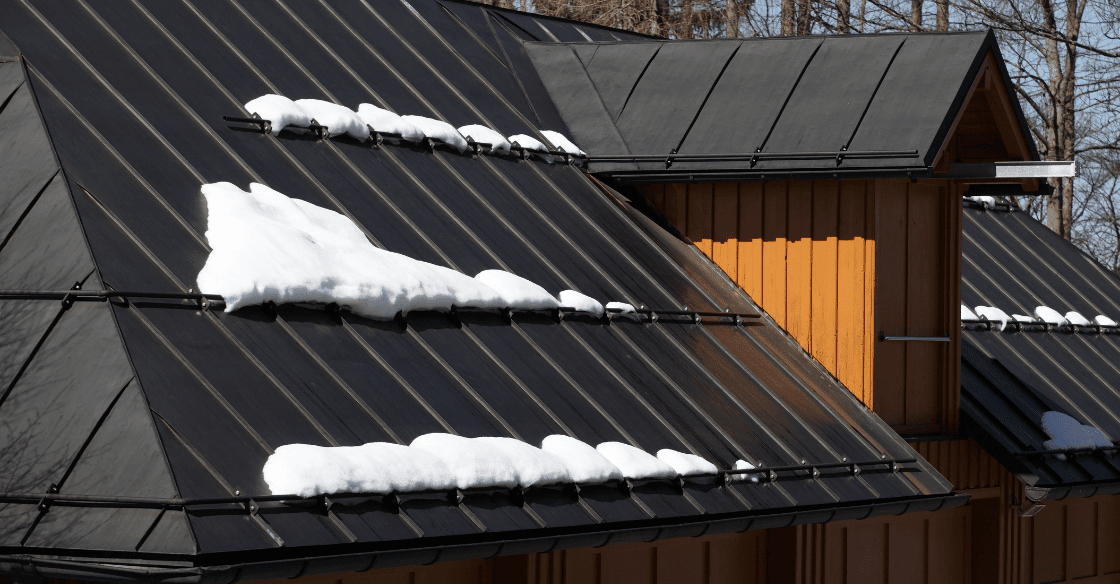Attic maintenance and proper attic weatherization are critical to your house’s energy efficiency and your health at home. Before it gets cold outside, you must know how to winterize an attic so you can save as much money as possible and breathe easily through the winter.
The Importance of Attic Maintenance in the Winter
The fact is, you lose about 25% of heating home energy through the roof. Imagine if you could take your heating and cooling supply — depending on the season — chop a quarter of it off, and throw it in the garbage. You still pay for your HVAC system to produce cold or warm air; it’s just that 25% of it goes directly into the waste bin.
An adequately maintained attic tells a different story. When you properly maintain your attic, you retain more of that energy. In turn, your home stays closer to the temperature you want. This retention means your heating system doesn’t have to work as hard, and you’ll save money on energy bills.
How to Prepare Your Attic for Winter

To take advantage of the savings your attic can offer, you need to prepare it for the cold months first. You have several opportunities for improving and maintaining your attic for the best results. Here’s what you need to know:
Inspect Your Attic
The first thing you should do is take a walk through your attic with an inspector. An attic inspector will thoroughly inspect every inch of the space. Take note of any cracks, water damage, holes, or damaged insulation.
A quick visual inspection will allow you to take inventory of any problems affecting your attic. Make sure to get a feel for your attic, as well. Is your attic warm in winter? It shouldn’t be.
Keep track of every issue your inspector finds and make a list so you can address each item, one by one.
Clear Your Gutters
Your gutters can have a profound effect on your attic. If your gutters are full of leaves, sticks, and other debris, the rainwater they collect won’t be able to go anywhere — except through your roof.
If there is a blockage, water won’t discharge through your downspout. Instead, it will collect and pool up in your gutters until it seeps through your shingles.
Once that happens, it’s only a matter of time before the water works its way into your attic. A leaky attic will lead to several problems down the road and cost you more the longer the problem persists. The best thing you can do is clean your gutters as a preventative measure.
Repair All Leaks
If you spot any leaks in your attic, you need to address them as soon as possible. Leaks aren’t just a drippy annoyance; they are a threat to your home and your health.
As water collects in your attic, it will pool up and facilitate the growth of mold and mildew. Mold thrives on moist organic material, like wood. Once it starts to grow, it’s only a matter of time until it spreads. Mold spores can get into your vents and eventually affect your breathing.
Leaks may also lead to wood rot, which will cause the wood in your attic to deteriorate over time. This deterioration can affect the structural integrity of joists and support beams and even reduce the lifespan of your roof.

Install Proper Insulation
Insulation in your attic will prevent heat loss and reduce your energy bills significantly. It will help prevent the spread of cold air from the attic throughout the rest of your home. If your attic needs new insulation, there are four common types to be aware of: fiberglass batt, cellulose, loose-fill fiberglass, and spray foam insulation.
First, we’ll cover fiberglass batt. Fiberglass batt insulation is relatively cheap and easy to install, but it offers the weakest insulation of the bunch.
Cellulose is recycled, ground-up paper mixed with boric acid to provide superior insect control and fire resistance. It’s easily found at a local home improvement store, but you’ll need an insulation blower to spread it properly.
Loose-fill fiberglass is one of the most popular forms of attic insulation because of its substantial R-value per inch. Like cellulose, you will need an insulation blower to spread it properly.
Finally, spray foam insulation is generally the best you can get. Because the foam fills and clings to every nook and cranny, it offers the best performance of the bunch.
There are two types of spray foam insulation: closed-cell and open-cell. They offer R-values of R-6.5 and R-3.6 per inch, respectively. For spray foam, you will need a professional to install it properly. If you ever find yourself installing insulation, don’t forget to wear a respirator for your safety.
Evict Pests
Pests like rodents and bugs can find their way into your home through holes in your roof so they can build a home in your attic. If you suspect your attic is home to pests, the first thing you should do is get them out.
The best way to do this is with professional help. Exterminators and some attic maintenance professionals can help evict pests. The next step is to patch up any holes in your attic. Look for any pest access points or gaps and seal them with caulk or expanding foam.
Inspect Your Furnace
Even if your attic is in perfect condition and properly insulated, you should take this time to inspect your furnace, especially if it’s located in the attic. Make sure to have your furnace professionally inspected at least once a year to keep its energy efficiency as high as possible.
Regular maintenance will put you ahead of any potential issues affecting your furnace so you can get them fixed before a breakdown occurs.
If you’ve been searching for how to heat your attic in the winter, don’t worry. You don’t want to heat your attic during the winter. If any moisture is introduced to your attic, the warmth will only help mold develop and thrive.
Properly Ventilate Your Attic
If you’re wondering should you close attic vents in winter, the answer is simple. Don’t close your attic’s vents for the winter.
You might be thinking that air sealing will prevent heat loss, but this is a popular misconception. Your attic’s insulation is mainly responsible for keeping the heat in, whereas comparatively, little heat will escape through attic ventilation.
Attic ventilation is vital for keeping your attic at a specific temperature so that mold, mildew, and pests will have a more challenging time thriving in your attic. By expelling warm, moist air, your attic will stay dry through the year.
For proper ventilation, you should follow the 1:300 rule. For every 300 square feet of ceiling, you should have 1 square foot of ventilation.

Consider Your Chimney
If you have a chimney, get it inspected if you haven’t in some time. Modern chimneys feature a flue pipe to expel moisture, but that moisture can be absorbed by the brick or stone of the chimney.
This moisture can pass through the masonry and leak into your attic. If water gets into your attic, mold growth and wood rot are soon to follow. If you have a brick or stone chimney, you should side it to prevent leaks.
Use an Attic Fan
If you’re worried about your attic temperature in winter, make sure to use an attic fan. An attic fan differs from a ceiling fan because it can help ventilate your attic and keep it at a cool, crisp temperature. Set your fan to draw in cool outside air.
By keeping your attic cool, you will reduce the potential for ice damming. Ice damming refers to the effect of snow melting on your roof when it’s too warm and refreezing toward the edge of the roof, where it’s cooler. When an ice dam forms, further runoff can easily pool up and seep beneath the shingles, where it will leak into your attic.
If you’re concerned about attic temperature control, a specific attic temperature range should help. Make sure your attic is no colder than 60 degrees Fahrenheit and no warmer than 10 degrees above the outside temperature.
Insulate Your Pipes
While uncommon, some homes have water pipes running through the attic. Because your attic needs to stay cool, it’s important to consider any lines that may run through it.
The best thing you can do is get some pipe insulation to keep these pipes from freezing. This approach is instrumental in unexpected emergencies, like roof damage or heater breakdown.
Pipe insulation is easy enough to find in stores. Simply snap on the insulation and seal with insulating tape.
Contact Attic Projects for Attic Maintenance This Winter
Attic Projects offers professional attic maintenance for San Diego, Orange County, and Seattle. If you need help with your attic or want more information on how to insulate a home for winter, we can help. Call or contact us today to schedule your free inspection.
Recommended Article: Attic Insulation for Energy Efficiency




